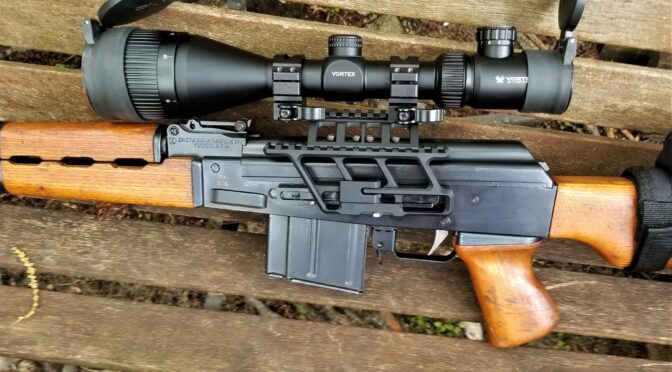I let the cat out of the bag a bit with my first post – I don’t like the Communist offset scopes. Yes, they are traditionally correct but I prefer a scope mounted on the centerline of the rifle with better optics including variable magnification. I had a combination in mind right from the start – the RS!Regulate mounting system and a Vortex Hog Hunter scope – why? Because I actually want to use this rifle to hunt hogs.
RS Regulate Mount
Based on past projects, I knew that the best mounting system for my project would be the RS Regulate system. The reason I am so adamant about this is that the design allows for a ton of flexibility in terms of front to back movement as well as left to right. Specifically, I chose the AK-303M lower rail and the AKR upper.
You basically install the AK-303M lower on the side rail. You can adjust the screw under the lever to adjust how much tension is applied when the lever is locked down.
My next step was to install the AKR top section and located it about three slots back as a starting point. In my case, that worked just fine. I then eyeballed the left to right location over the centerline of the rifle and installed the screws. Note, I do not drill and install the pins until test firing just in case I decide to move the rail around.
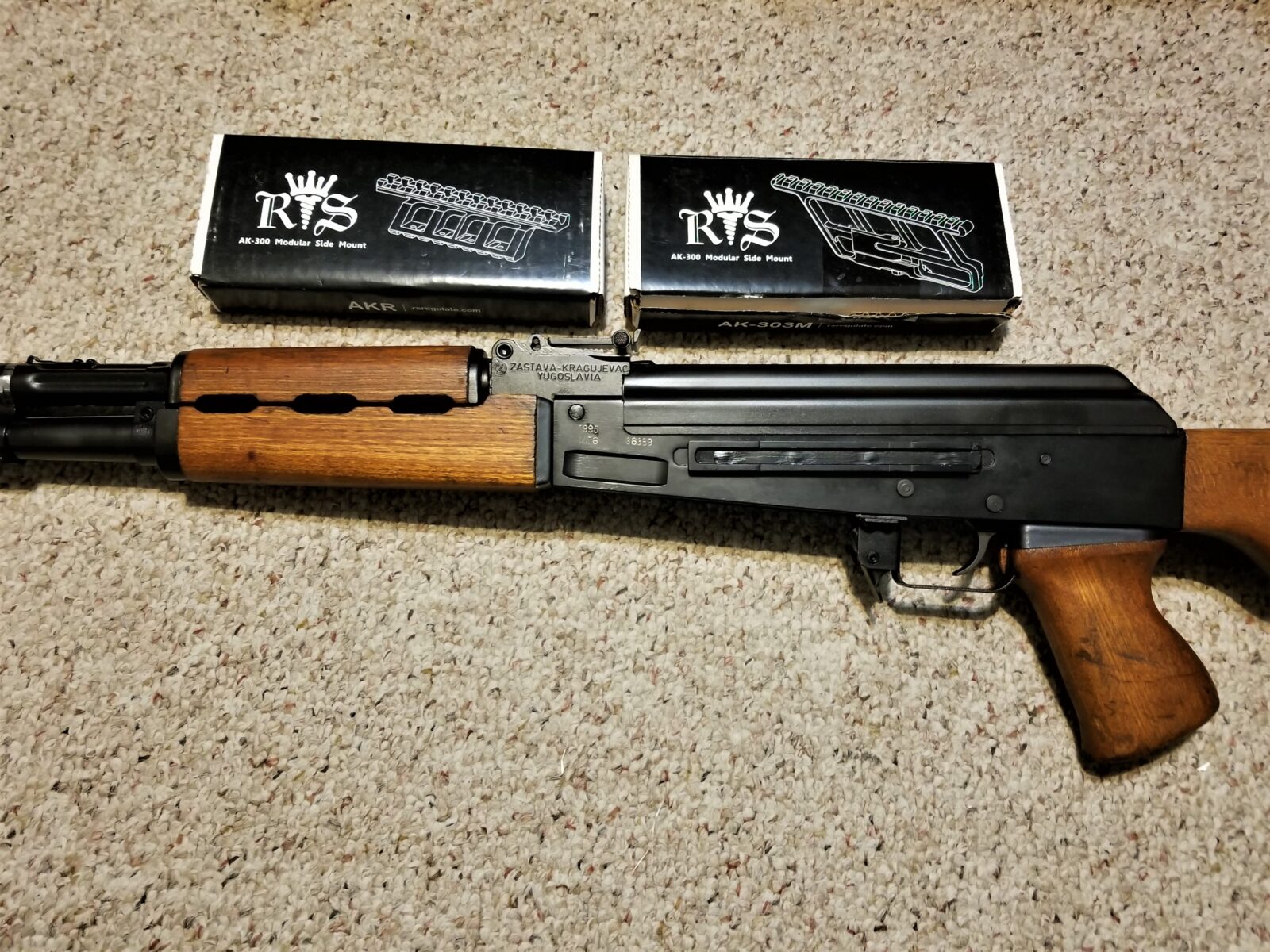


Vortex Crossfire II Hog Hunter Scope
Part of my design criteria for the rifle was to use it for hog hunting. That would entail using a scope that is pretty versatile in daylight as well as dusk. To accomplish this, you need a scope with a big objective to gather as much light as possible (50mm or better), a 30mm tube and good glass to aid in the transmission of the image.
In terms of the reticle, I really did not see a need for something really fancy with tons of MRAD or MOA markings for calculating distance, drop and windage. However, I did know that I would need some form of illumination for low light.
Lastly, in all candor, I knew I was putting an optic on a rifle that would likely shoot 1.5-2″ at 100 yards. I did not need to put a super-high end optic on the rifle – just one that was good enough and reliable.
After doing some reading, the ideal scope with the above design criteria and a very affordable price turned out to be the Vortex Optics Hog Hunter (SKU: CF2-31049). The specs are pretty good:
- Magnification 3-12x
- Reticle: V-Brite Illuminated (MOA) – The center 0.5 MOA Red Dot is illuminated and the subtensions are in MOA
- Objective Lens Diameter 56 mm
- Eye Relief 3.5 inches
- Field of View 36.7-9.2 ft/100 yds
- Tube Size 30 mm
- Turret Style Capped
- Adjustment Graduation 1/4 MOA
- Travel Per Rotation 15 MOA
- Max Elevation Adjustment 60 MOA
- Max Windage Adjustment 60 MOA
- Parallax Setting 10 yards to infinity
- Length 14.3 inches
- Weight 21.1 oz (just over 1.3 pounds)

Quick note on the lens caps. They are from Vortex but I am not super excited by that front one. They seem very well made but it is definitely a stretch to get the rubber over that huge front bell. I’m going to stick with them for now.
Figuring Out The Rings
In most cases, you want to mount the scope as close to the center of the bore as you can. This reduces the angle from the center of the scope to the center of the bore.
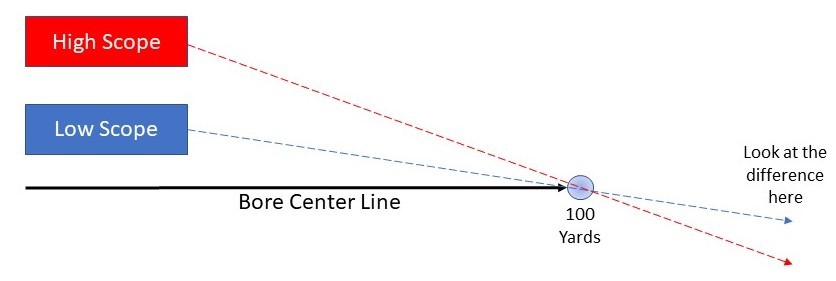
So here’s the tough part – any AK-type rifle has a big rear sight block (RSB) that is pinned to the barrel that not only holds the rear leaf sight but also holds the rear of the gas tube in position and the front of the dust cover is inserted into a slot — in short, it has to be here. Thus, any optic must clear the RSB somehow.
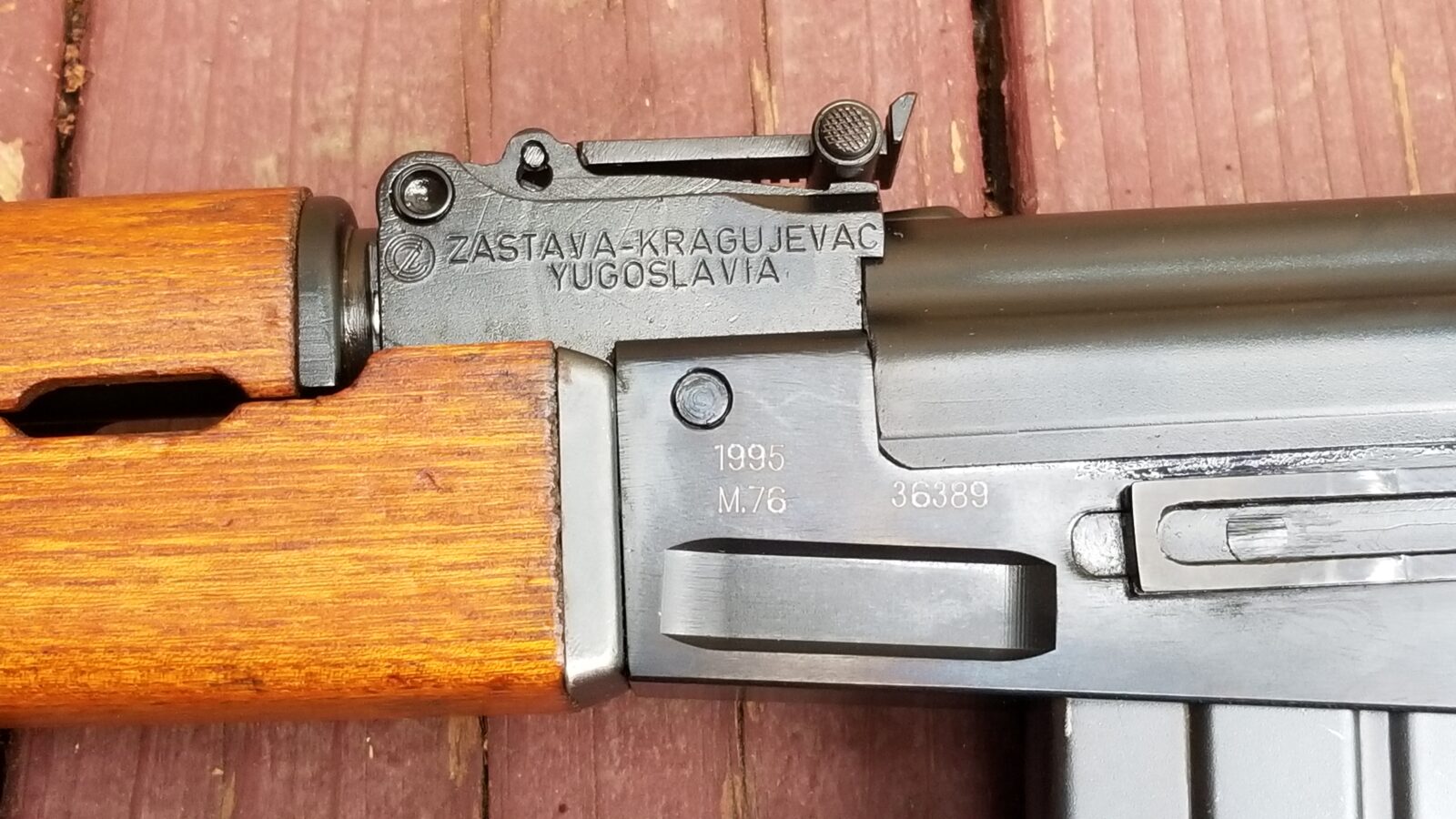
So this means we have two options – either the optic must slide into position and clear the RSB while doing so -or- we vertically lower the scope into position. To slide the scope in either means you go with tall enough rings and/or a small enough front objective that the front of the scope can clear.
The vertical option means we can use both a bigger objective and lower rings but begs the question – what do we do if we need to open the rifle up in the field? That is why I opt for quick release rings. Now, let me point out the photos show interim UTG rings that will not be on the rifle long term. I had them in storage from way back when and used them and some other models to do some “what if” scenarios.
The problem with this model of ring from UTG is that they use a round screw that goes through the Picatinny rail channel – they should be using square stock to securely and consistently secure the ring to the rail. While I do not expect a ton of recoil from the M76, I would rather the rings sit securely in the rail and not move around or place uneven stresses on the rails.
In the next few weeks, the UTG rings will be replaced by an American Defense AD-Recon-SL-30-STD one piece mount. American Defense makes top notch gear. The UTG rings definitely helped me prototype the layout and identify that I needed rings that measured from the base of the ring to the center line at least 0.915″. The AD-Recon-SL will hold to scope just a tad higher at 1.110″ and I am okay with that almost 0.195″ difference. It’s real tight right now as you can see:
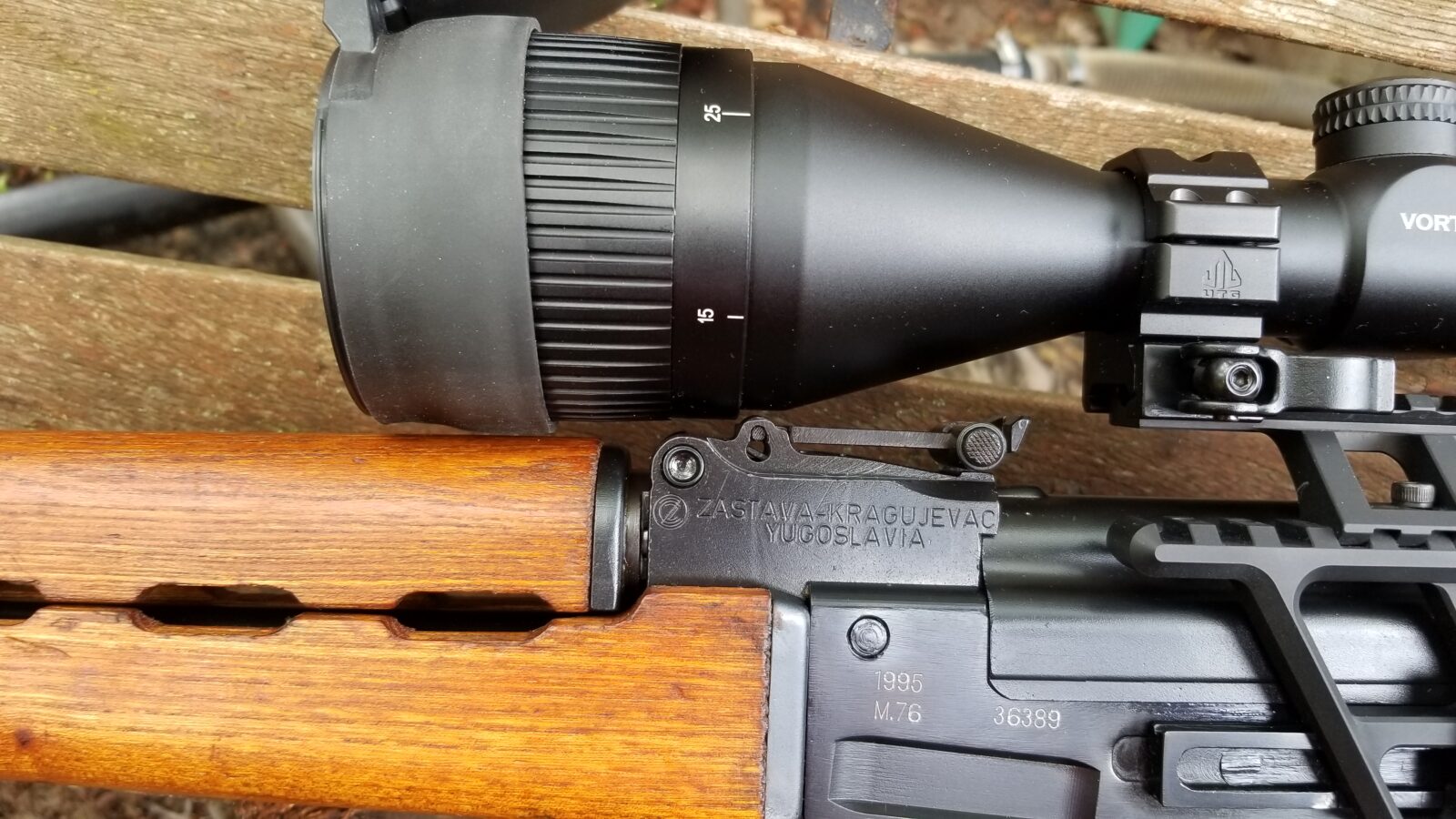
Voodoo Cheek Pad
The one thing I quickly found out was that I needed a cheek piece to give me a better weld. I have used Voodoo Tactical cheekpieces a number of times in the past so I used one hear to give me about a 1/2″ lift to better line up behind the scope.
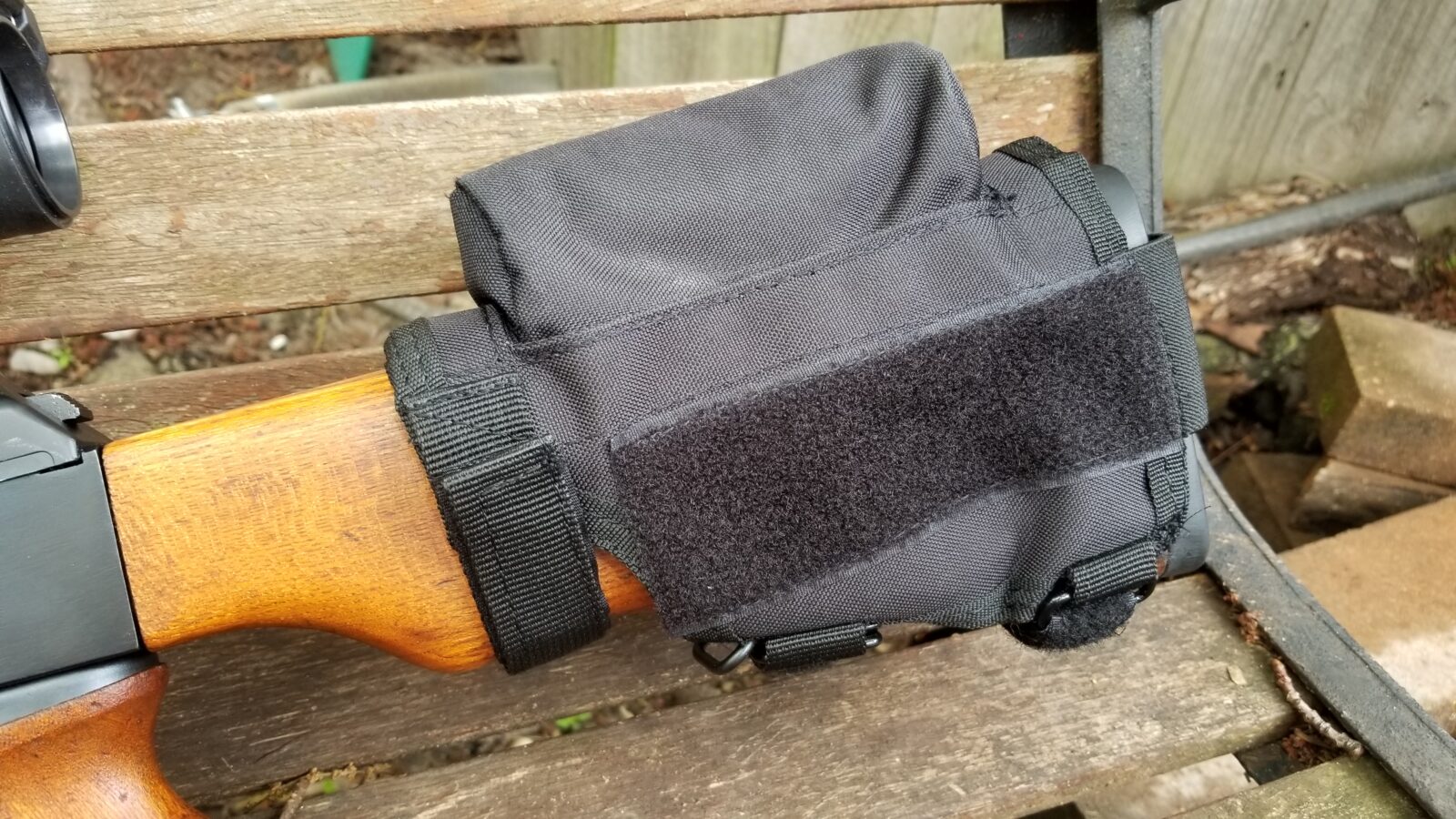
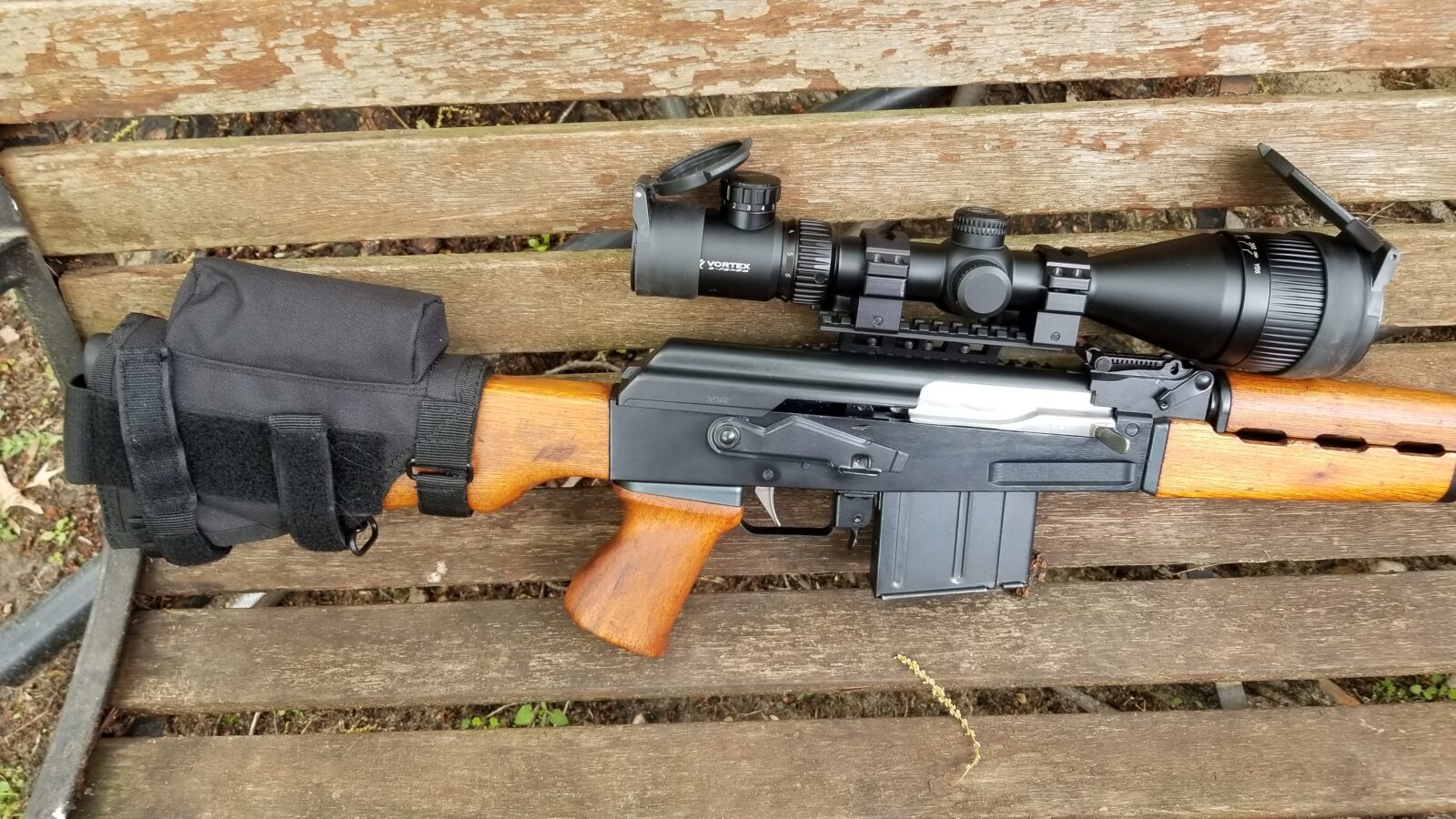
The Result
Right now, I’m happy. I need to get the ADM mount in and get to the range but everything is very promising so far. Everything has trade-offs. To get the extra light at dusk, the scope’s giant objective makes it sit higher. If I wanted the scope lower and didn’t need all the light collection, I would have used a scope with a smaller objective – such as a 44mm.
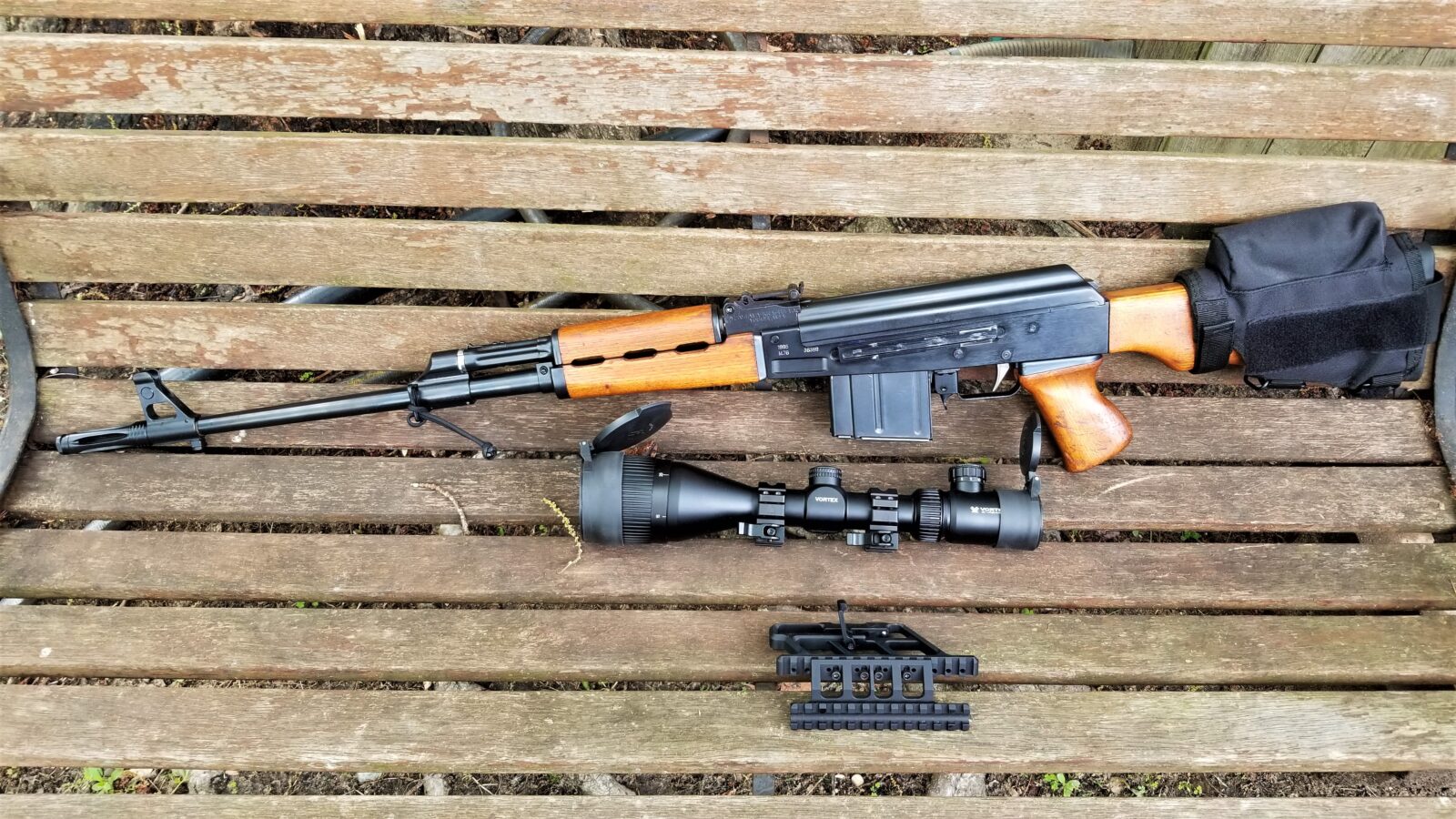


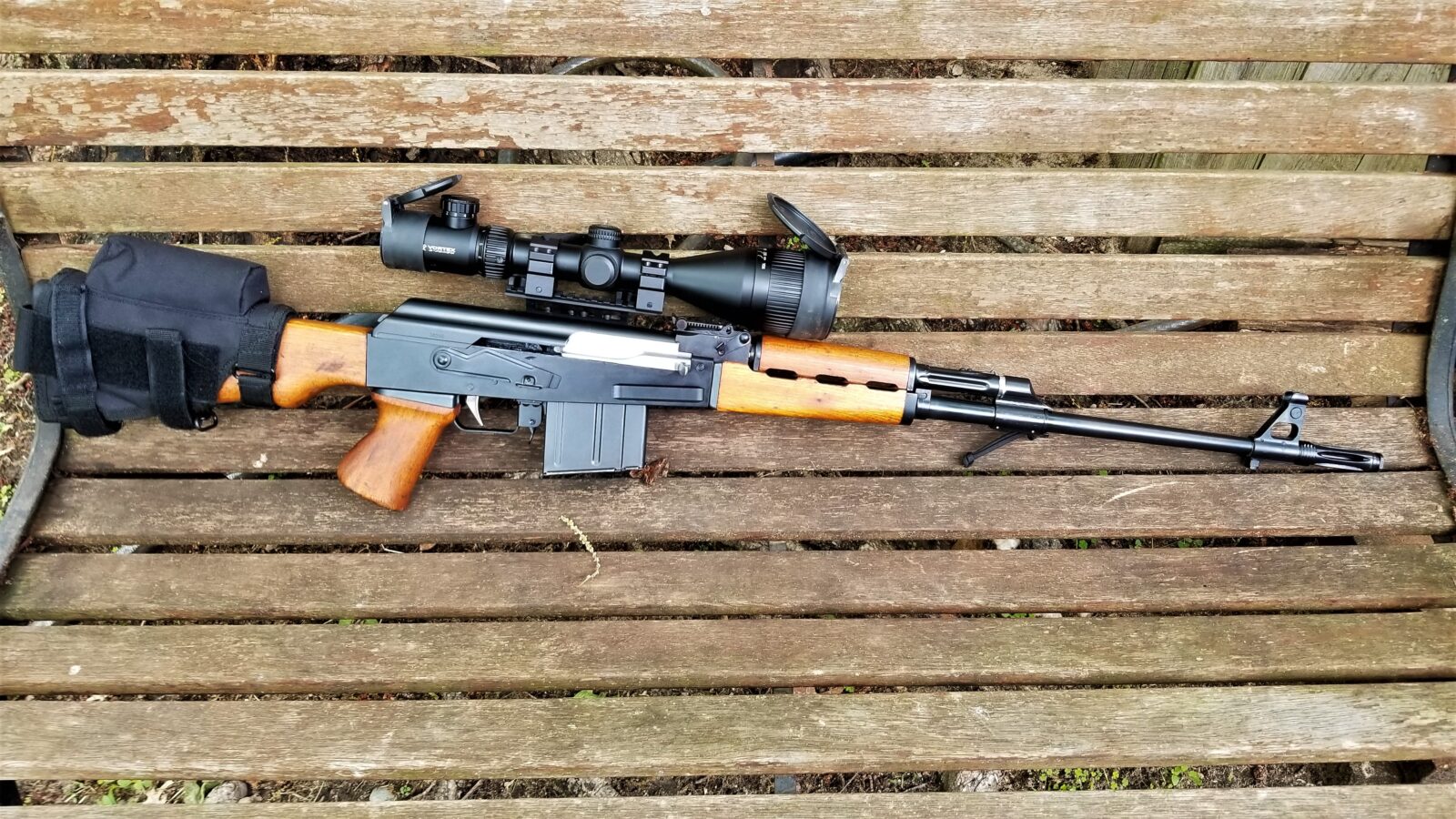
Okay, in the next post, I’ll tell you about the ALG trigger.
If you find this post useful, please share the link on Facebook, with your friends, etc. Your support is much appreciated and if you have any feedback, please email me at in**@*********ps.com. Please note that for links to other websites, I may be paid via an affiliate program such as Avantlink, Impact, Amazon and eBay.
